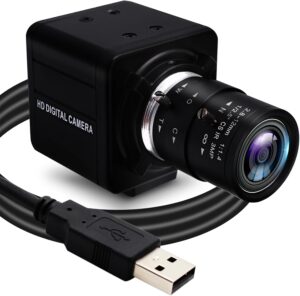Golf is a game of precision, skill, and strategy. Whether you’re a weekend warrior or an aspiring professional, the tools you use can make a huge difference in your performance. One of the most critical aspects of maximizing your potential is golf club fitting. It’s no longer just for the pros—customized clubs can improve your game, increase accuracy, and boost confidence for golfers at every skill level.
In this article, we’ll cover everything you need to know about golf club fitting: what it is, why it matters, and how it can improve your performance on the course. Plus, we’ll answer some frequently asked questions to ensure you’re well-informed before booking your fitting session.
Table of Contents
What is Golf Club Fitting?
Golf club fitting is a process where a professional customizes your golf clubs to suit your unique physical characteristics and swing mechanics. This involves adjustments to the club’s shaft length, lie angle, loft, grip size, and clubhead. Each element of the club can be modified to fit your swing speed, ball flight tendencies, and overall style of play.
Instead of relying on off-the-shelf clubs designed for the average golfer, fitted clubs are tailored to your specific measurements and playing style. A proper fitting helps to ensure that your clubs optimize your natural swing, leading to better consistency and overall performance.
Why is Golf Club Fitting Important?
If you’re serious about improving your game, investing in a professional club fitting is essential. Here are a few key reasons why club fitting matters:
1. Maximizes Distance and Accuracy
When your clubs are the correct length and lie angle for your stance and swing, you can more easily square the clubface at impact. This leads to straighter shots and greater distance, giving you an edge over competitors.
2. Improves Consistency
Custom-fitted clubs make it easier to replicate your swing, reducing mishits and improving ball-striking consistency. Whether you’re driving off the tee or making approach shots, fitted clubs will help you feel more in control.
3. Enhances Comfort and Reduces Injury Risk
Playing with clubs that are too long, short, or ill-fitted can put unnecessary strain on your body. A well-fitted set of clubs reduces physical stress, helping to prevent injuries, especially in the back, shoulders, and wrists.
4. Boosts Confidence
Knowing you have the right equipment can boost your mental game. When you feel confident in your clubs, you’re more likely to play with focus and determination.
The Club Fitting Process: What to Expect
A typical club fitting session involves several steps to ensure your clubs are perfectly suited to your needs:
1. Interview and Evaluation
The process begins with a conversation about your playing style, strengths, weaknesses, and goals. You’ll also undergo an evaluation of your body measurements, including height, wrist-to-floor distance, and hand size.
2. Swing Analysis
Using advanced technology like launch monitors and high-speed cameras, the fitter will analyze your swing speed, ball flight, and spin rates. This data helps determine the optimal shaft flex, club length, and lie angle for your swing.


3. Testing Different Configurations
You’ll then test different club configurations, trying out various shafts, heads, and grip sizes to see what feels best. The fitter will make real-time adjustments based on your feedback and performance data.
4. Final Adjustments
After narrowing down the ideal combination of club components, the fitter will make final adjustments to your clubs. This could include changing the loft of your driver, adjusting the lie angle of your irons, or recommending a different grip size.
5. Post-Fitting Review
Once the fitting is complete, the fitter will review the results and discuss how your new clubs should improve your game. You’ll also get advice on any necessary practice drills or strategies to adapt to your new equipment.
How Often Should You Get Fitted for Clubs?
While it’s important to get fitted when you first start playing golf, you should also consider club fittings at key points throughout your golfing journey. Regular fitting sessions are recommended if:
- You experience significant changes in your body (such as weight gain or loss).
- You notice consistent issues with certain aspects of your game.
- You upgrade to a new set of clubs or make major changes to your swing.
A Club Fitting: When Is It Time to Get One?
There’s no wrong time to get fitted, but certain moments may offer more value:
- When you’re buying new clubs: Before making a major investment, it’s worth ensuring that each club is perfect for you.
- After major swing changes: If you’ve adjusted your stance, grip, or swing mechanics, a fitting can optimize your new playing style.
- As you progress: Your skill level will change as you practice and play more often, and your equipment should evolve with you.
Does Club Fitting Help Beginners?
Absolutely! While many people assume that club fitting is only for seasoned players, beginners can benefit greatly as well. Properly fitted clubs can set new golfers on the right path from day one, helping them avoid common mistakes and develop good habits from the start.
One of the best golf club set for the beginner is Callaway.

FAQs About Golf Club Fitting
1. How long does a golf club fitting take?
A typical fitting session can last anywhere from 1 to 3 hours, depending on whether you’re getting fit for a single club (like a driver) or a full set.
2. How much does golf club fitting cost?
Prices vary depending on the fitter and whether you’re getting fit for a full set or just one club. Expect to pay anywhere from $100 to $400 for a comprehensive fitting session.
3. Do I need new clubs for a fitting, or can I fit my existing clubs?
While many golfers get fitted when purchasing new clubs, you can also bring your existing clubs to be adjusted. A fitter can modify your current set for better performance, saving you from the need to buy new clubs.
4. Will fitted clubs make me a better golfer?
Fitted clubs won’t magically lower your handicap overnight, but they can help you maximize your potential. Combined with practice and good technique, fitted clubs will improve your overall performance.
5. How often should I get my clubs re-fitted?
If your swing or body changes significantly, it’s a good idea to get re-fitted. Generally, it’s recommended to revisit a fitting every couple of years or whenever you invest in new equipment.
Conclusion: Take Your Game to the Next Level with Custom Club Fitting
Golf club fitting is an investment in your game that pays off in better performance, improved accuracy, and greater consistency. Whether you’re a beginner or an experienced player, a professional fitting can help you unlock your true potential on the course. Book a fitting session today and take the first step toward lowering your scores and increasing your enjoyment of the game!